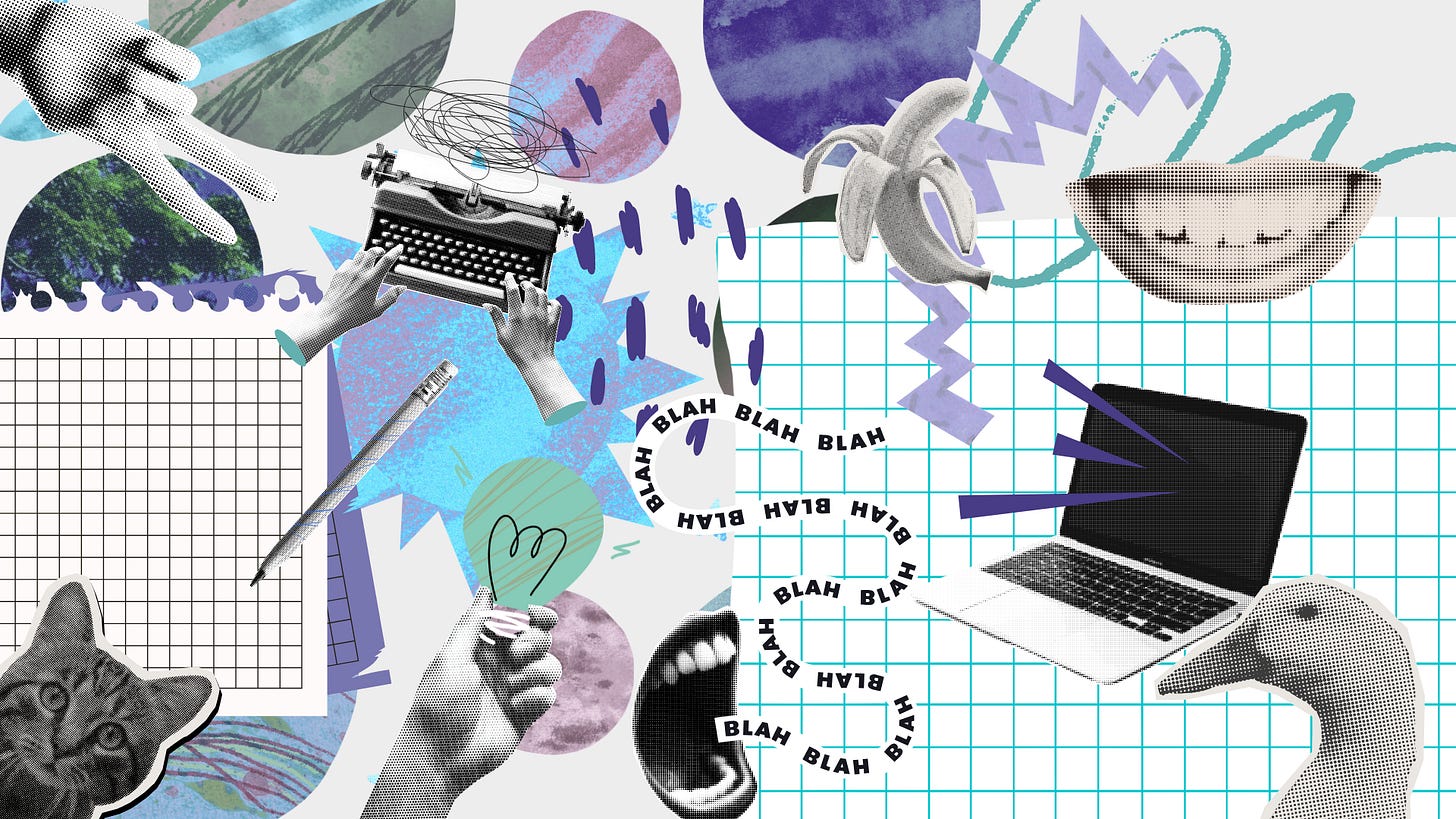Joke formats for novel writers
Eight joke formats to punch-up your dialogue, character interactions, and prose
Everyone’s tastes as a reader (and writer) are different. But for me, whether I’m reading it or writing it: a book has to have a good dollop of humour. I love banter. I live for hijinks. Shenanigans? I’ll take a full helping. And seconds. And thirds.
I want to be able to write great jokes, and I want the humour in my stories to be varied, because sarcastic banter starts to fall flat if it’s the only thing you ever do.
So, in an effort to build my comedy writing skills over the summer, I signed up for a comedy writing class at Boom Chicago in Amsterdam (which has notable alums like Seth Meyers, Jordan Peele, and the Ted Lasso creators).
It was honestly SO fun. Here’s some of what I learned:
How comedy works
A joke is a story, and a punchline is a mini plot-twist. The logic of humour is surprise. You build an expectation… and then you break it. Cliches and stereotypes aren’t funny, because they aren’t surprising. Humour works best when it’s super-specific and relatable.
But, there are many ways to pull it off.
Eight joke formats
1. Set-up / Punchline
The classic structure: introduce an idea or scenario (set-up), then surprise the audience by taking it in an unexpected direction (punchline).
The key is misdirection. You lead the audience to assume one thing, then twist their expectations for comedic effect.
2. Triple / List Jokes
Rule of Three:
Present two items, then hit with a third that breaks the pattern. Start looking out for this in the dialogue of your favourite TV comedies, you'll notice it every episode.
Normal, normal, random: “I bought bread, milk, and 4,251 gummy bears.”
Normal, normal, alarming: “I bought bread, milk, and a flamethrower.”
General, general, super-specific: “She likes music, movies, and the sound of raccoons fighting over pizza twists at 3 a.m.”
List Jokes:
List jokes are like the rule of three, they just extend beyond three items. It works particularly well when the items are wildly different or the list is comically long for no reason.
3. Comparisons
Use similes or metaphors to draw funny parallels.
“X is like if Y and Z had a baby.”
“X is like Y: [unexpected twist].”
4. Character
Physicality and character voice are ways to add extra humour. And they don’t have to be cracking jokes and witty retorts. A character that takes themselves extremely seriously, or who is oblivious to the humour in their actions or speech can be very funny in the right context (Think Drax from The Guardians of the Galaxy, or Phil Dunphy from Modern Family).
5. Callbacks
Callbacks create a sense of payoff and are a strong way to close a chapter, sequence, act or the finale. Use a joke or phrase from earlier in your story over again (creating a sort of “in-joke” in the context of your character’s world).
6. Commentary
Step outside the joke to comment on it using a second character. This meta approach can highlight the absurdity or awkwardness of the joke, or help to provide a rounded view if the joke takes a particular angle.
7. Alliteration
Repeat consonant sounds. I don’t know why this works, but it does.
8. Game within a game
This is sort of like a callback in that it creates in-jokes in the context of the novel. Hide wordplay, puns, song lyrics, or quotes within your joke. This adds layers and rewards attentive readers with extra laughs.
What we’re working on in FDP
Curious about what to look forward to in First Draft Pro later in the year?
Writing streaks + better goal tracking
Export to .doc
Email + password login
Strike-through formatting
Line breaks in scene cards
Option to hide the left menu
Adding an external link to a chapter
If you have feedback or feature requests for First Draft Pro, you can add them (and upvote others) on our feedback forum.



These are great. As a standup comedian currently writing a novel, I'd add a few more:
1. Absurd conclusion: if X is true, then surely it would lead to a world where Y is also true. Can be used in 1st person for the narrator to show the audience why a situation is farcical.
2. Pull back and reveal: start with a close up observation, then reveal the wider context that makes it funny. E.g. a character kneels to tie their shoelaces, then onlookers start screaming because they're in the middle of a tightrope at the time.
3. Non-sequitur: something completely unexpected comes out of nowhere. Good at the end of a chapter as a cliff-hanger. E.g. "it was at that moment that the penguin hit the windscreen."
4. Rhyme: like alliteration, this can also make a sentence inexplicably funny. It gives a sing-song feeling which can be especially funny when that's contrasted with a dark or serious situation.
I had no idea Boom Chicago had a writing course—sounds amazing!! These tips are gold